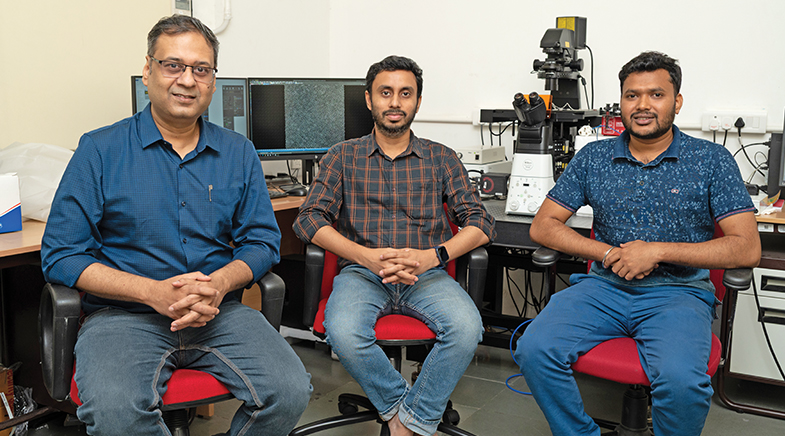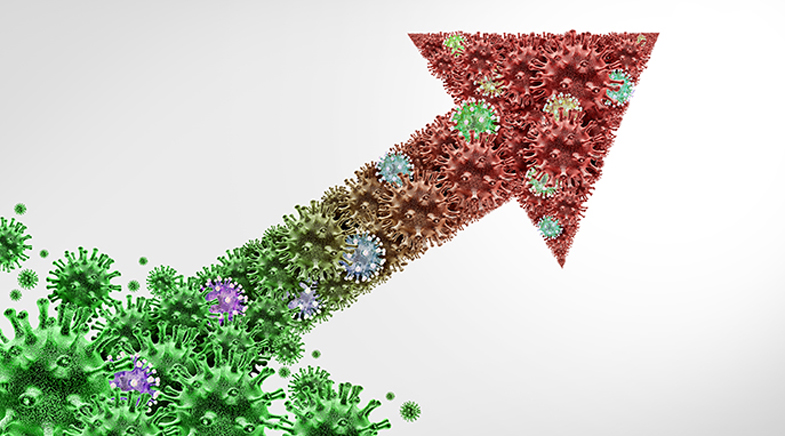The geometry of Gulliver
-
- from Shaastra :: vol 02 issue 04 :: Jul - Aug 2023

... and the maths of Moby-Dick. A joyous journey to a land at the intersection of literature and mathematics.
I was intrigued by Professor James Moriarty, from the Sherlock Holmes stories, when I read of him years ago. What a fascinating character! Yet, when I later learned the binomial theorem, I recalled Moriarty with mild puzzlement. Moriarty was a professor because he knew the binomial theorem? The mathematical artefact that is essentially an exercise in multiplication? Really, is this the best the great Arthur Conan Doyle could do?
I was delighted, therefore, to learn that Sarah Hart shares my Moriarty befuddlement. Doyle says this Moriarty character has "a phenomenal mathematical faculty", and that his academic exploration of the "Binomial Theorem" won him "the Mathematical Chair at one of our smaller universities". Hart reacts to this succinctly and with punch: "this is as silly as portraying someone as a professor of adverbs".
Professor of adverbs! That line alone is worth the price of this book. The only quibble I have with Hart in this Moriarty section is that she wonders why it's "the evil Moriarty who is a mathematician rather than the logic-obsessed Holmes". I mean, she has a plausible and satisfying explanation: "it's because of the stereotype of the mathematician as a mere calculating machine". For me, however, what's telling here is that Doyle does what so many lazy authors and film directors do when they want to talk mathematics: they toss out a random mathematical phrase and hope nobody really asks questions about it.
MATHS IN UNLIKELY PLACES
Still, that's just a quibble, and by that point in the book, quibbles hardly mattered. By then, what the cover of the book tells us has taken on meaning and substance. After all, plenty of us think that there can be little in common between soaring words of great literature and mere numbers; that there may be an element of sacrilege in even mentioning them in the same breath. If you're one of those, if you think that mathematics and literature are vastly different fields of human endeavour pursued by very different kinds of humans, Hart has written this book for you. It was a revelation to learn, on reading it, that so much of literature is informed by mathematical allusions and ideas. It was a treat to find that so many familiar literary names had abiding, wide-ranging mathematical interests that spill out of the stories they crafted.

Just a few pages after Moriarty, we meet Christopher Boone from Mark Haddon's The Curious Incident of the Dog in the Night-Time – the title itself is a line that Sherlock Holmes rattled off in the short story 'The Adventure of Silver Blaze'. Christopher is a fan of prime numbers. Not only are the chapters numbered with primes, but Christopher spells out the famous 'Sieve of Eratosthenes' method for finding them. He is also very eloquent about primes: "I think prime numbers are like life. They are very logical but you could never work out the rules, even if you spent all your time thinking about them." Christopher, for Hart, is a "fully rounded human being... a counterpoint to the austere mathematical logic of Holmes and Moriarty".
How marvellous that it's because Christopher loves primes and isn't a slave to cold logic that he is "fully rounded"! I don't think it's only mathematicians who would appreciate how much those two characteristics hint at, personality-wise.
In some ways, this suggests the soul of this book. The connections between mathematics and literature, between reason and flights of emotion, between art and science... It's true, ordinarily many of us might scoff at the thought that there are such connections at all. But Hart wants to burst that bubble. By the time she comes to Christopher, she's built a strong and thought-provoking case.

For a while, however, I wasn't sure I would be persuaded. At the start, Hart explains some of the mathematics in poetry. Like the "longest book ever written": a collection of lines that can be combined in different ways so that it "contains" 100 trillion poems. Like how you construct certain kinds of poetry forms. For example, the "sestina", an elegant poetic form comprising six stanzas of six lines each, the last words of which get shuffled around and repeat themselves, providing a continuity between the stanzas. Or the "patterns of stressed and unstressed syllables" in poetry – and here Hart introduces us to the rhythms of Sanskrit poetry. As she writes, there's "some fascinating mathematics to play with" in all this.
Definitely fascinating, but also a little mechanical perhaps? It left me asking: is this all there is?
GULLIVER CALCULUS
Of course not. Hart uses that as a base and builds from there. Consider her examination of creatures of vastly different sizes in literature. For example, the giant spider Aragog of the Harry Potter stories, or the Lilliputians in Gulliver's Travels. Mathematics offers us a way to check how plausible these fictional creations really are. Change the height of a creature by a factor of 2, and you've changed its surface area by a factor of 4 (2 squared) – and its volume and so its weight by a factor of 8 (2 cubed).
Hart shows that this "square-cube law" means that spiders and humans cannot exist in oversized avatars like Aragog: their bones would break from the weight they would have to bear. On the other hand, Lilliputians "benefit hugely from the square-cube law when it comes to strength... (and are) able to carry many times their own weight". What's more, they can fall from pretty much any height without worry.
But before you start hunting for ways to shrink to Lilliputian measure, there are downsides too. For example, Gulliver or you or I can get our daily caloric requirements from munching through about 25 apples. Never mind that that would get tedious pretty fast, and spare a thought for apple-eating Lilliputians, trying to work their way to their own far smaller daily requirement of calories. Hart calculates that even with that smaller number, they would need to eat 161 Lilliputian apples a day. That might not leave much time, Hart remarks, "for the finer things like culture and waging war". Also, as another calculation establishes, swimming "would be a lot more tiring for Lilliputians than it is for normal-sized humans".
If you think that mathematics and literature are vastly different fields of human endeavour pursued by very different kinds of humans, this book will tell you otherwise.
Elsewhere, Hart introduces us to Moby-Dick. For Ishmael in Herman Melville's great novel, "mathematics, and symmetry in particular, symbolize virtue. The sperm whale has a 'pervading dignity' because of the 'mathematical symmetry' of its head." In fact, she writes, there's a "broader mathematical theme underlying Moby-Dick, and that's the symbolism of mathematics as a way of understanding, and to some extent trying to control, our environment."

Now we're getting somewhere! Here's mathematics as intrinsic to literature. Not long after, we're rubbing shoulders with James Joyce. In his Ulysses, not only does he introduce us to what are now known as Joyce numbers in his honour, not only does he stuff plenty of calculations into the book – but some of those calculations are "incorrect on purpose". Another delight: Joyce, the mathematically inclined writer, is offering us an "in-joke... for the mathematically inclined".

Leo Tolstoy finds wisdom to explore in calculus and its use of infinitesimals. His War and Peace is an effort to show that history is not made or directed by kings or great figures. Instead, it is driven by a collective of "infinitesimally small units... the individual tendencies of men". No wonder Tolstoy saw mathematics "as an emblem of logical rigor... the only chance we have of understanding history."
There's also Lewis Carroll, whose writing has plenty of mathematical references because he was himself a mathematician. But more than those references, says Hart, "it's his entire approach to storytelling that reveals his mathematical cast of mind."
IMAGINE THAT!
Storytelling and mathematics. For the mathematically inclined, but really for anyone, what's not to love about that? Near the end, Hart hopes that her readers have come to understand that "there is nothing unnatural about combining mathematics and literature". And she quotes Russian mathematician Sofya Kovalevskaya: "Many people who have never had occasion to learn what mathematics is... consider it a dry and arid science. In actual fact it is the science which demands the utmost imagination."
Those last few words, flavoured as they seem to me with both rigour and creativity, nicely capture the spirit of this book. May we all be fully rounded. And love primes, perhaps.
Once a computer scientist, Dilip D'Souza now writes on mathematics, among other things.
Have a
story idea?
Tell us.
Do you have a recent research paper or an idea for a science/technology-themed article that you'd like to tell us about?
GET IN TOUCH














